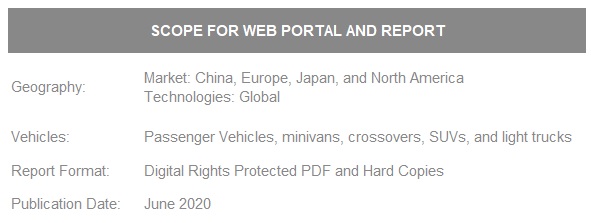- Home
- Industry Reports
- Thermoplastic Use in ICE and E-Powertrain Systems
Thermoplastic Use in ICE and E-Powertrain Systems
Efforts to overcome future emission challenges for carbon dioxide and other exhaust emissions, such as nitrogen oxides, are leading to considerable powertrain innovations. The primary innovation is electrification which may range from a low level such as start/stop systems to 48 volt systems with recuperation to full hybrid systems to plug-in hybrid vehicles to fully electric vehicles. Major improvements continue to be sought in both the traditional ICE system and in the e-powertrain system.
Thermoplastics are an important enabler to the powertrain changes as the OEMs seek solutions to meet ever tightening government regulations, cost pressures, and consumer expectations. Thermoplastics not only offer mass reduction benefits, but also functional benefits including part integration, improved component reliability and both component and system cost benefits.
For both traditional ICE powertrains and e-powertrains, plastics may find significant opportunities:
- ICE powertrains — intake manifolds and more recently, intake manifold integrated CACs, and perhaps EGR coolers, valve covers and mechaniocal parts such as fluid control valves have been success stories. Improving temperature resistance properties are leading thermoplastics to find increased usage in hot-side charged air systems
- E-powertrains — primary components such as power electronics, DC/DC converters, 48V battery housings, auxilliary heating components and of course, high voltage batteries offer challenging opportunities for the use of thermoplastics
Electrification is no longer merely hype — high volume applications are coming in every segment:
- 48V — eventually the entire 8th generation Volkswagen Golf fleet
- Toyota’s numerous high production volume hybrid vehicles
- PHEV product offerings from several OEMs including BMW, BYD, Mercedes-Benz, PSA and Rowe
- Full electric vehicle offerings from BAIC, BYD, Nissan, Tesla, and others
Market opportunities for the use of thermoplastics within different vehicle electrification levels will proliferate. The ITB Group’s report will provide an analysis of current key applications for thermoplastic use in both traditional powertrains and e-powertrains. Emerging opportunities for improved materials, processing or improved system designs will be evaluated.
The ITB Group’s new 2020 report follows up on numerous reports it has completed over the last 25 years related to automotive air induction systems, cooling systems, and electrified powertrain thermal management. This analysis is presented in a dynamic two-pronged approach:
- Web-based Portal– provides ongoing updates concerning developments in plastic applications for powertrains, government regulations and supply base shifts.
- Industry-Funded Report– update of key technical, legislative and market developments together with an overview of the business dynamics of the powertrain plastics market.





